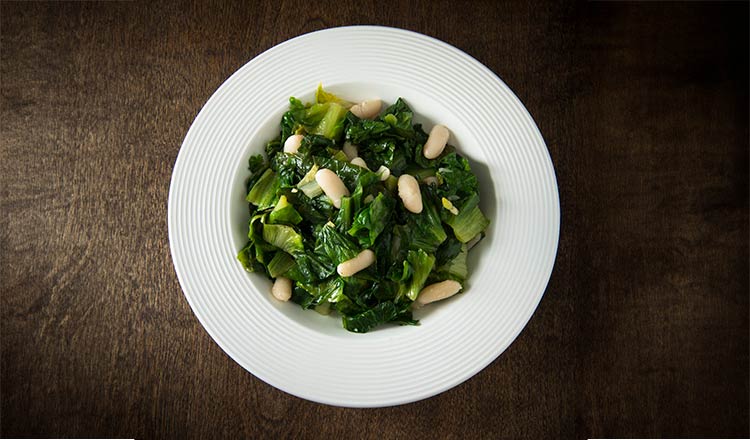You can use this basic blanching technique to prepare spinach, kale, chard, escarole, arugula, and other greens. Once the greens are blanched and squeezed dry, you can simply sauté them with olive oil and garlic for a delicious side dish.
- Trim the stems, and remove any split or bruised portions. Remove any wilted or bruised leaves.
- Some greens, like collards or chard, may have stems that should be either cooked separately from the greens or started in the boiling water before the leaves. To prepare them, cut the stems away from the leaves, and keep them separate. Rinse the stems and cut them into pieces of the size required in your recipe.
- Clean the leaves in plenty of cold water until there are no more traces of sand or grit. Drain them in a colander.
- Fill a large pot with water and add enough salt to be able to barely taste it. Cover the pot and bring the water to a rolling boil over high heat.
- If you are cooking greens with sturdy stems like chard, add them to the pot first and cook for 2 to 3 minutes before adding the leaves.
- Add the cleaned greens all at once and stir to submerge them. Cook uncovered until tender and a deep color, 3 to 4 minutes. Lift the greens out of the water with a sieve or slotted spoon and transfer to a bowl of ice water. After the greens are chilled, drain in a colander for several minutes.
- If necessary, squeeze the greens as follows: Drape a clean dish towel or a large piece of cheesecloth in a colander. Put the greens in the center of the cloth and gather the edges of the towel around the greens. Tighten the cloth by twisting the edges with one hand. Use the other hand to twist the ball of greens in the opposite direction. Once you have squeezed out the extra liquid, unwrap the greens and chop them as coarsely or finely as your recipe requires.


